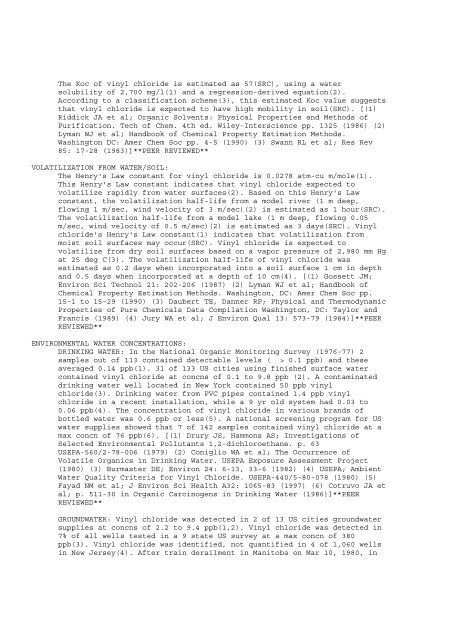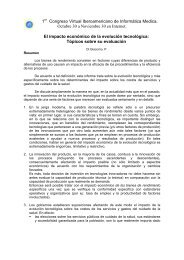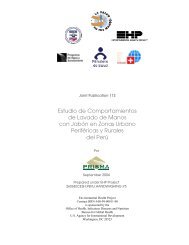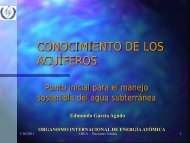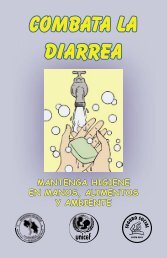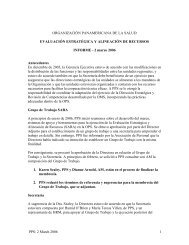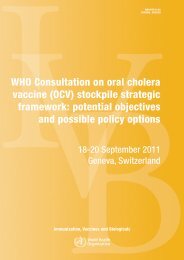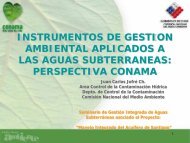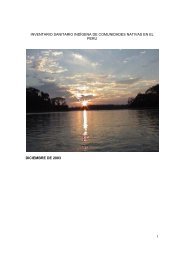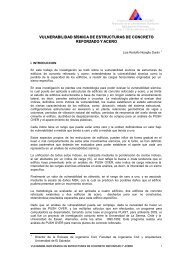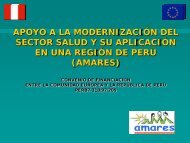a database of the National Library of M
a database of the National Library of M
a database of the National Library of M
You also want an ePaper? Increase the reach of your titles
YUMPU automatically turns print PDFs into web optimized ePapers that Google loves.
The Koc <strong>of</strong> vinyl chloride is estimated as 57(SRC), using a watersolubility <strong>of</strong> 2,700 mg/l(1) and a regression-derived equation(2).According to a classification scheme(3), this estimated Koc value suggeststhat vinyl chloride is expected to have high mobility in soil(SRC). [(1)Riddick JA et al; Organic Solvents: Physical Properties and Methods <strong>of</strong>Purification. Tech <strong>of</strong> Chem. 4th ed. Wiley-Interscience pp. 1325 (1986) (2)Lyman WJ et al; Handbook <strong>of</strong> Chemical Property Estimation Methods.Washington DC: Amer Chem Soc pp. 4-5 (1990) (3) Swann RL et al; Res Rev85: 17-28 (1983)]**PEER REVIEWED**VOLATILIZATION FROM WATER/SOIL:The Henry's Law constant for vinyl chloride is 0.0278 atm-cu m/mole(1).This Henry's Law constant indicates that vinyl chloride expected tovolatilize rapidly from water surfaces(2). Based on this Henry's Lawconstant, <strong>the</strong> volatilization half-life from a model river (1 m deep,flowing 1 m/sec, wind velocity <strong>of</strong> 3 m/sec)(2) is estimated as 1 hour(SRC).The volatilization half-life from a model lake (1 m deep, flowing 0.05m/sec, wind velocity <strong>of</strong> 0.5 m/sec)(2) is estimated as 3 days(SRC). Vinylchloride's Henry's Law constant(1) indicates that volatilization frommoist soil surfaces may occur(SRC). Vinyl chloride is expected tovolatilize from dry soil surfaces based on a vapor pressure <strong>of</strong> 2,980 mm Hgat 25 deg C(3). The volatilization half-life <strong>of</strong> vinyl chloride wasestimated as 0.2 days when incorporated into a soil surface 1 cm in depthand 0.5 days when incorporated at a depth <strong>of</strong> 10 cm(4). [(1) Gossett JM;Environ Sci Technol 21: 202-206 (1987) (2) Lyman WJ et al; Handbook <strong>of</strong>Chemical Property Estimation Methods. Washington, DC: Amer Chem Soc pp.15-1 to 15-29 (1990) (3) Daubert TE, Danner RP; Physical and ThermodynamicProperties <strong>of</strong> Pure Chemicals Data Compilation Washington, DC: Taylor andFrancis (1989) (4) Jury WA et al; J Environ Qual 13: 573-79 (1984)]**PEERREVIEWED**ENVIRONMENTAL WATER CONCENTRATIONS:DRINKING WATER: In <strong>the</strong> <strong>National</strong> Organic Monitoring Survey (1976-77) 2samples out <strong>of</strong> 113 contained detectable levels ( > 0.1 ppb) and <strong>the</strong>seaveraged 0.14 ppb(1). 31 <strong>of</strong> 133 US cities using finished surface watercontained vinyl chloride at concns <strong>of</strong> 0.1 to 9.8 ppb (2). A contaminateddrinking water well located in New York contained 50 ppb vinylchloride(3). Drinking water from PVC pipes contained 1.4 ppb vinylchloride in a recent installation, while a 9 yr old system had 0.03 to0.06 ppb(4). The concentration <strong>of</strong> vinyl chloride in various brands <strong>of</strong>bottled water was 0.6 ppb or less(5). A national screening program for USwater supplies showed that 7 <strong>of</strong> 142 samples contained vinyl chloride at amax concn <strong>of</strong> 76 ppb(6). [(1) Drury JS, Hammons AS; Investigations <strong>of</strong>Selected Environmental Pollutants 1,2-dichloroethane. p. 63USEPA-560/2-78-006 (1979) (2) Coniglio WA et al; The Occurrence <strong>of</strong>Volatile Organics in Drinking Water. USEPA Exposure Assessment Project(1980) (3) Burmaster DE; Environ 24: 6-13, 33-6 (1982) (4) USEPA; AmbientWater Quality Criteria for Vinyl Chloride. USEPA-440/5-80-078 (1980) (5)Fayad NM et al; J Environ Sci Health A32: 1065-83 (1997) (6) Cotruvo JA etal; p. 511-30 in Organic Carcinogens in Drinking Water (1986)]**PEERREVIEWED**GROUNDWATER: Vinyl chloride was detected in 2 <strong>of</strong> 13 US cities groundwatersupplies at concns <strong>of</strong> 2.2 to 9.4 ppb(1,2). Vinyl chloride was detected in7% <strong>of</strong> all wells tested in a 9 state US survey at a max concn <strong>of</strong> 380ppb(3). Vinyl chloride was identified, not quantified in 4 <strong>of</strong> 1,060 wellsin New Jersey(4). After train derailment in Manitoba on Mar 10, 1980, in


